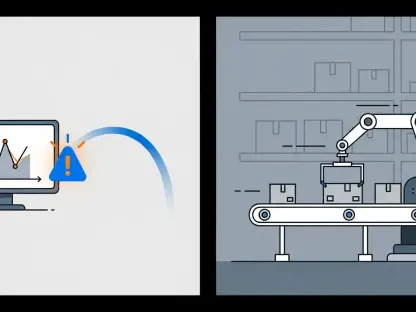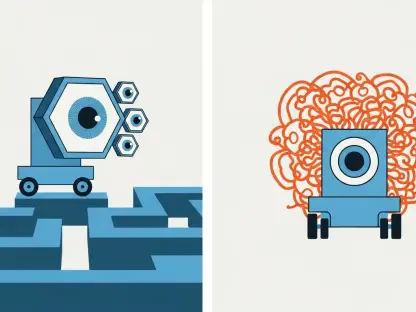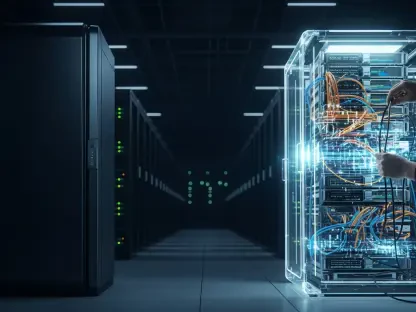Laurent Giraid is a leading figure in artificial intelligence, with profound insights into machine learning, natural language processing, and the intricate ethical questions that surround the field. He offers a perspective deeply rooted in both technical acumen and philosophical understanding. In this conversation, we’re exploring the enigma of generative AI models—how they have come to be a mystery even to their creators, and the implications this has for technology and society at large.
Can you explain why even AI creators find it challenging to understand how gen AI models work?
Understanding generative AI models is akin to grasping a complex system that evolves autonomously. Even though we construct the frameworks and algorithms, these models learn and adapt in ways that aren’t directly observable or predictable. They don’t follow a predetermined path but instead forge their own routes to success, which often results in behaviors and patterns that surprise even those who built them.
Why is the lack of understanding of AI models considered unprecedented in the history of technology?
Traditionally, technology has been about clear, logical steps programmed by humans. With generative AI, the models learn from vast troves of data and develop intricate patterns independently. This shift from deterministic programming to autonomous learning is something we’ve never quite seen before, leading to a kind of technological mystery that challenges our foundational understanding.
How do generative AI models differ from traditional software programs in how they operate?
Traditional software follows explicit instructions, designed to execute defined tasks accurately and predictably. In contrast, generative AI operates through learning, processing enormous amounts of data to draw insights and perform tasks without detailed human guidance. This autonomous learning allows for more flexibility and creativity in problem-solving but also distances us from direct control.
Could you elaborate on Chris Olah’s description of gen AI as “scaffolding” on which circuits grow?
The “scaffolding” analogy highlights a foundational structure upon which AI models can build complex capabilities. It suggests an initial framework that supports exponential growth and evolution, much like neurons growing and connecting in a biological brain. This dynamic formation enables AI to develop sophisticated functions, often beyond initial expectations.
What is mechanistic interpretability, and why is it significant in the study of AI?
Mechanistic interpretability is a crucial approach to reverse-engineering AI models, aiming to decode how these systems process inputs to produce outputs. It’s vital because it attempts to bridge the gap between complex model operations and human comprehension, potentially unveiling the mysterious pathways these digital minds take from query to conclusion.
How does mechanistic interpretability compare to the study of the human brain in terms of complexity and understanding?
Studying AI models parallels neuroscience, where understanding the human brain remains one of science’s great challenges. Both fields involve deciphering extraordinarily complex networks of interconnected ‘neurons,’ whether biological or digital. While AI models are fully instrumented, akin to having access to every digital neuron, the task of interpretation demands innovative approaches and rigorous investigation.
What factors have contributed to the rise of interest in studying the inner workings of gen AI in recent years?
Increased academic interest derives from the immense impact AI is set to have on various industries and daily life. As these models advance, they hold the promise to enhance their capabilities further. Their inner workings present a captivating intellectual puzzle for students and researchers who recognize the potential societal and technological transformations AI could herald.
Why do students find the study of gen AI’s inner workings appealing?
Students are drawn to this field because of its transformative potential and the intellectual excitement it offers. Understanding how AI models operate opens up avenues for new technology developments and ensures that future innovations occur responsibly and effectively. It’s a chance to partake in shaping the future of technology.
How could understanding the inner workings of gen AI models potentially enhance their capabilities?
Greater understanding can lead to improvements in AI efficiency, safety, and functionality. By unraveling these models’ processes, we can mitigate errors, hone decision-making accuracy, and embed advanced features that further extend their utility. Moreover, it helps prevent malicious use by ensuring ethical oversight.
Can you describe the approach of studying computations performed by gen AI to improve understanding, as mentioned by Mark Crovella?
This involves examining the operations AI models conduct internally when responding to queries. By observing these computational processes, researchers aim to understand the pathways and decisions that lead to specific results. It’s an intricate task of breaking down vast computations and revealing the logic embedded in AI’s responses.
How does the startup Goodfire aim to improve the understanding and reliability of gen AI models?
Goodfire focuses on interpretability tools that visually represent AI reasoning. These tools help to identify and rectify errors ensuring models operate transparently and safely. Additionally, they aim to prevent deceptive AI behavior, thus contributing positively to the development of trustworthy AI systems.
What are the potential risks of deploying intelligent AI models without fully understanding their workings, as mentioned by Eric Ho?
Deploying AI models prematurely can lead to unintended consequences, from errors in critical fields like national security to ethical issues in technology deployment. Without full understanding, there’s a risk of models adopting harmful biases, or decisions made without comprehensible reasoning, impacting lives and economic sectors negatively.
How optimistic are experts about deciphering AI models’ biases and intentions by 2027?
Experts are cautiously optimistic, believing that ongoing advancements in interpretability techniques could unlock comprehensive insights into AI biases and intentions within a few years. As these methods evolve, there’s hope for achieving reliable detection of model inclinations, ensuring ethical and transparent AI development.
What progress has Dario Amodei highlighted in terms of understanding AI models?
Dario Amodei has pointed to recent strides in interpretability research that hint at imminent breakthroughs. With improved methodologies and tools, there is a growing belief that intricate models can be fully understood, paving the way for safer and more accountable AI systems within a couple of years.
How do researchers have an advantage in studying AI models compared to studying the human brain?
Researchers possess a unique benefit in studying AI because these models are entirely instrumented—every digital neuron is accessible and measurable. Unlike the human brain, where much remains mysterious, AI allows for precise observation and analysis, offering optimism for uncovering its complexities more readily.
In what areas could a better understanding of gen AI prevent critical errors, as suggested by Amodei?
Critical sectors like national security or healthcare could benefit immensely from AI, but accuracy is essential to avoid disastrous consequences. Understanding AI deeply ensures that errors can be predicted and prevented, leveraging its capabilities safely where precision is paramount.
How might breakthroughs in understanding gen AI models influence the technology competition between the US and China?
Should a US company establish a benchmark in AI reliability and functionality, it could secure a competitive market edge globally. A breakthrough would affirm technological leadership, impacting the broader geopolitical landscape and innovation rivalry between major powerhouses like the US and China.
Why is it crucial for humanity to understand AI creations before they impact our economy and lives drastically?
AI has the potential to fundamentally alter our societal structures, economies, and daily lives. Understanding these creations ensures we can harness their capabilities responsibly, avoiding negative impacts and fostering a future where AI is a beneficial force for growth and improvement.
What are the potential benefits of a gen AI model with a stamp of reliability for competitive market advantage?
A reliable AI model guarantees performance and safety, instilling trust among users and stakeholders. This trust translates into a significant market advantage, capturing business opportunities and fostering innovations that align with ethical standards, thereby leading the charge in global AI development.









